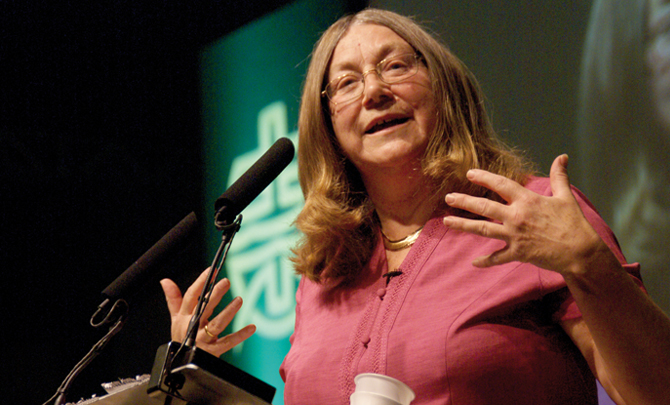Interview: Half humanity - Reform Magazine
Elaine Storkey talks to Steve Tomkins about violence against women
Worldwide, 140 million women and girls have undergone female genital mutilation (FGM). In the course of the present decade, the UN estimates, 18.5 million girls under the age of 15 will enter forced marriages. Of the global victims of trafficking detected in 2009, 59% were adult women and 17% girls. In the US there are 4.8m cases of intimate partner violence against women a year. In the UK it is estimated that 85,000 women are raped each year.
Elaine Storkey’s important book Scars Across Humanity: Understanding and overcoming violence against women (SPCK, 2015, £9.99) surveys the forms that violence against women takes across the world, telling stories and collecting statistics. It also investigates where the phenomenon comes from and considers how we can tackle it. Dr Storkey received the 2016 Abraham Kuyper Prize for Excellence in Reformed Theology and Public Life for this book.
Reform talked to Dr Storkey at Greenbelt festival in August 2016, where she was speaking on the subject.
What does it do to you emotionally to immerse yourself in the subject of violence to women, as you must have done to write Scars Across Humanity?
I came across the phenomenon as a much younger woman. A Christian woman’s magazine had a questionnaire on domestic violence, and was absolutely gobsmacked at the number of clergy households where it was happening. The Editor didn’t know what to do with all the questionnaires, so I blithely agreed to look at them and advise her how to have an article on the subject.
I couldn’t sleep that night after I read them. I realised there is a huge problem in our churches with intimate partner violence, which I had not encountered. I later became very involved with incest survivor groups, and counselled a few people in connection with domestic violence through the Open University, so I became familiar with the subject. But when I became President of Tearfund in the late 1990s and started travelling with them, I started seeing the phenomenon over and over again, in different forms.
This was what blew my mind. In 2006 in the Congo I saw women being used as weapons of war – raped, given HIV Aids, made to carry the infants of the enemy, their bodies simply taken over and commodified for sex or progeny. The way these women were treated was absolutely abysmal, appalling. But then in other cultures we met women who were struggling with FGM. It was normal in their culture, but they were still bleeding and in constant pain. Then in another culture we’d find that because of selective abortion – or infanticide – half the girls had simply disappeared. There were very few girls in a whole village because no one could afford the dowry. Then of course there’s the whole business of trafficking and prostitution, and child brides, and honour killings …
After a while my head was reeling and the only way I knew how to help was to write. It took me from 2006 to 2015, travelling, listening to women, immersing myself in statistics, every single UN document, Dfid’s [Department for International Development] figures. Just as the book was being printed the latest figures came from Dfid on FGM in the UK, and they were so much worse than the figures I was quoting from four years previously, we stopped the printing and updated it.
So it’s that kind of immersion, living it, thinking it night and day, talking to people and no longer being surprised about what you hear. For me [writing] is the only way of dealing with it. Other people who haven’t had that outlet have gone under, because what you hear and see from these women is so barbaric, so horrendous, you don’t know how to process it. When you look into the face of a 17-year-old girl who has been blinded by her assailant so that she will not identify him in court, what do you do? Or a woman who has been subjected to an acid attack, and her skin is wrinkling and hanging down from her face, and she looks like she’s 85 but she’s only 22. These images you can’t lose. And the voices of the women too…
___
This is an extract from the November 2016 edition of Reform.















Submit a Comment